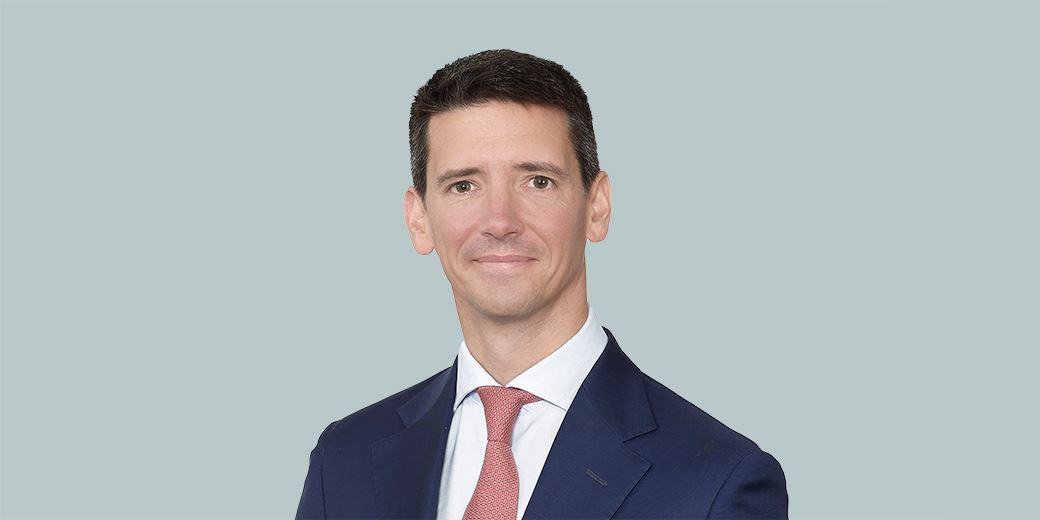There might be light at the end of the tunnel, but it ain’t here yet.
How Invesco overhauled bond fund with green slate

Latest Newsletter
Value stance rewards managers with first AAA rating
The year comes to a close with a host of managers gaining their AAA wings.
Real Life: A cheaper, smarter way to fly business to the US
Companies are clamping down on travel costs. Here’s how to travel in comfort while keeping the expenses department happy.
Community
There is an alternative to creating new funds from scratch, especially as product creation is increasingly expensive: take an existing product and do something new with it. This is exactly what Invesco’s head of fixed income products, Lewis Aubrey-Johnson, and his team have done with the Invesco Environmental Climate Opportunities (ECO) Bond fund.
The fund, a Luxembourg Sicav, was originally known as the Invesco Global Bond fund and launched in 1994. Twenty-seven years later, it changed its name, objective and portfolio managers. It is in Citywire’s Bonds – Global sector, ranked 120 of 1,001 over three years.
In February 2022, Invesco also launched a UK version with the same name and objectives. However, the funds can be run slightly differently, Invesco said if, for example, the SFDR and SDR requirements vary (see our SDR explainer here). That fund is in Citywire’s Mixed Assets – Flexible GBP sector. (Check up on launches in both sectors in our tables at the bottom of this article.)
Citywire Amplify asked Aubrey-Johnson and Tom Hemmant, the latter of whom runs the ECO Bond fund alongside Citywire AA-rated Michael Matthews, about the road to relaunch.
What was the process behind changing the fund’s name?
Aubrey-Johnson: The work behind the strategy began in the summer of 2020. We took our time in understanding the marketplace, thinking about the challenges of climate investing and working out what we felt was going to be the best approach. Once we worked out our approach, who was going to do it, and how we were going to do it, then it was a question of what was the most efficient way of getting a product into the marketplace.
For us, the most efficient way was converting an existing fund we had, and there are a number of reasons for that. With an offshore fund, you don’t need a shareholder vote to change elements of it. We notified shareholders of the change in advance and, thankfully, those shareholders were supportive of the change and were happy to remain invested in the fund. That change was implemented in October. The other element of change was that the process also coincided with a time when we were making several of our funds Article 8-compliant under SFDR, and so this fund, the ECO Bond fund, is also an Article 8-compliant fund.
Why did you want to launch this strategy at that time?
Hemmant: We saw an increase in demand from investors and an increasing interest in these sorts of [climate] products. We also felt that one of our desk’s strengths is proper fundamental analysis and understanding of companies. We have a well-resourced analyst team and we take credit risk. This is an area that plays to our strengths, because there are few rights and wrongs, and few clear answers.
We then went further by zeroing in on climate. This isn’t a broad ESG product: the ESG leg of our mandate is climate. For us, that was really purposeful. To triangulate financial risk-reward, E, S, and G, to try to do everything for everybody is a difficult task. We chose to focus on climate.
Climate is one of the most pressing problems that we’re facing today. It’s also high in the general public’s consciousness. It’s not just some passing trend. The energy transition is going to require a huge amount of capital.
Finally, we’re not wholly data-driven; we’re making qualitative judgments and using our understanding of companies. But it is helpful that there is a good level of quant data on climate you can get your hands on, which is less true of some other ESG issues.
Aubrey-Johnson: What this fund gives investors is two key distinguishing features. The first is that the fund is supporting some important climate themes. The transition to renewable energy is an important theme in the fund. But it’s far from the only thing. Another theme is the shift to green transport – electric vehicles, public transportation systems and so on. Another interesting theme is financials. We’re looking at the property sector. Buildings are responsible for a significant amount of emissions.
The second distinguishing feature is that every company in the fund has what we call strong climate characteristics. These are companies that can operate at a lower carbon-intensity than their peers, that are decarbonising more rapidly than their peers, or are producing goods and even services that directly contribute to transition. We have developed a selection process to pick those companies, and exclusion is the first but only a small part of that. We have a credit selection process to make sure that every company that we finance is exhibiting these strong climate characteristics.
When we’re thinking about which companies can be in the fund, which companies have those strong environmental characteristics, it’s step one: do they pass the exclusions? Step two: do they look good from the climate comparator perspective? And step three: do they look once we’ve undertaken the research?

Invesco’s Tom Hemmant, who manages the firm’s Environmental Climate Opportunities Bond fund alongside Michael Matthews
How did you change the asset allocation for the new fund?
Hemmant: We’ve been thinking about exposure to coal and things like that in all of our funds for many years. None of that is new. But in terms of this portfolio, we sold virtually the entire portfolio and it was carefully curated to meet the ESG goal.
Aubrey-Johnson: Essentially, the old fund was a global government bond fund with duration and foreign exchange risk as key drivers. We’ve now made it essentially a global corporate bond fund with some flexibility.
What companies and sectors are you avoiding as part of the investment strategy?
Hemmant: We have exclusions to ensure that there are minimum standards and to reassure investors. We have minimum standards from a climate perspective: no thermal coal greater than 5% of revenue, or unconventional oil and gas. Those are similar to all of our Article 8 funds, but the one that we’ve added in, which is not in the standard Article 8 funds, is oil and gas exploration, refining, transport and storage greater than 25% of revenue.
We had some debate around this because we recognise that some of these big oil and gas companies are going to be a part of the change. Some of them are adapting business models in quite material ways. However, it’s not appropriate for a fund like this to be owning oil and gas companies, even the best, so effectively, they’re excluded – we’ve got a 25% revenue cap here. There might be a European utility that might still have some gas storage or gas transport businesses. They’re not involved in the extraction of the fossil fuel, but perhaps they’re delivering it to households. We’re allowing ourselves to own companies like that.
In addition, we have what we call non-climate-based exclusions. These are just the minimum standards we think are required for an ESG product. People are hopefully buying our fund because they want to support the energy transition. But we think those people would probably also prefer not to be invested in unconventional weapons and tobacco companies.
How has the current energy crisis impacted the fund and what do you expect will happen in the coming months?
Hemmant: There is a fighting chance that we get through the winter without formal rationing of energy in Europe, but the only way we get through that is by continuing high energy prices and adjusting demand down. Industries may have to reduce demand by 15-20%. This has huge financial implications, and we have to look at all the credit risks in the portfolio.
We have a cohort of companies that we have selected in order to meet the ESG objective but have ended up being more resilient in a downturn. There are a few pure-play renewable energy companies, and they sell their electricity on feed-in tariffs – fixed-price, 20-year tariffs.
They are not earning supernormal profits now, so they aren’t going to get hit by windfall taxes, or they won’t be affected by an economic recession, it’s just a steady revenue. We own a lot of electricity distribution and transmission network companies, so the wires and grids, which are going to enable electrification and decarbonisation. They generate regulated returns and so are fairly indifferent to changes in commodity prices. We end up overweighting those types of names compared to other portfolios, so that should hopefully add an element of resilience.
We own larger European utilities; they’re probably going to suffer an element of windfall tax but, generally, I don’t think that will affect credit quality and these are exactly the companies that Europe needs to pour capital into renewables, and electricity networks to integrate all of those renewables.
When I look at the portfolio as a whole, there are not too many names where I’m seeing a potential default risk or anything like that. The additional consideration is that, today, bond valuations are a lot cheaper.
Latest Newsletter
Amplify Issue 30: The fund groups topping the tree
We analyse which groups have had the biggest inflows and outflows in 2022, look at managers achieving their first AAA ratings, and hear from Rob Kyprianou on why regulation gets it back to front.
Amplify Issue 29: Red hot: 2022’s private market hiring spree
2022 has been a hot year for private markets, but are asset managers putting the brakes on their expansion efforts? Plus, we look at how the bear market has affected launches this year and look at how firms can better communicate their brand values.
Amplify Issue 28: Fill your ESG product gaps
We hear from fund buyers on what they’re looking for from an ESG fund, find out what Neuberger Berman is plotting in the alts world, and learn the winners of Citywire’s Gender Diversity Awards.
Community
